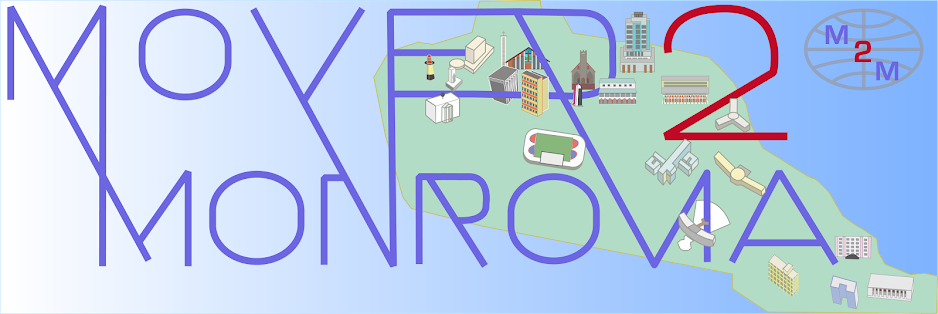The Executive Mansion was constructed over a three - year period, from 1960 to 1963. The entire project was designed and supervised by Stanley Engineering Company of Africa; and the Construction Contractor was Liberian Construction Corporation (LCC). The project was officially dedicated on January 3, 1964, the seat of the Executive branch of the Government of the Republic of Liberia.
The building is an eight-storey horizontal arch-like (semicircular) structure, constructed primarily of reinforced concrete post and lintel system, covering a total area of approximately 26,500 sq. ft. Vertical circulation throughout the building is by means of four major staircases and six elevators. One of the elevators is solely used by the president and visiting dignitaries, another one is used for freight and the rest of the other four elevators are used by the public.
The Executive Mansion was designed and is being used for four basic functions; the official residence of the President of Liberia, Offices of the President and Staff of the Ministry of State, reception and living accommodations for guest/dignitaries and maintenance/technical sections. The focal point of the building is an elaborate northern and centralized entrance/reception hall of the second floor, which connects the executive parlor, located in the eastern section of the building along with relevant supporting facilities; and to that of other administrative offices, located in the western section.
The entrance is approached by a bridge-like driveway (semi-circular), which overlooks and engulfs a parade ground in the north and under which lies a reflected pool. A reinforced concrete canopy covers this entrance and bears the seal of the republic of Liberia centralized on its reinforced concrete V-shaped fascia. Access to the beautifully landscaped, ocean view garden, yard, which is located at the southern side of the building, is also obtained from the above - mentioned hall.
Very prominent on the exterior walls of the building, running across the northern and southern surfaces is gold colored composite rectangular shaped solar screen, which runs from the second to the seventh floor. These aluminum metal solar screens are divided into several sections by vertical fins from first through eighth floors of the building and are concealed behind the indicated solar screens and fins. The building’s western and eastern exterior end- walls, which also bear concave forms are finished with mosaic tiles.
Since the completion of construction works on the Executive Mansion in 1963, there had been two major rehabilitation works executed on the composite building elements/systems. Additionally, it is worth noting that the first renovation/rehabilitation of works was executed during the 1988 /89 under the reign of the late President Samuel K. Doe. The second renovation work was executed during the tenure of former President Charles G. Taylor in the year 1997-1998. Since the indicated period, there has been no other renovation & rehabilitation of the building element system.
The Executive Mansion was gutted by fire during Liberia's 159th Independence Anniversary celebration on July 26, 2006. Following the outbreak, the government of Liberia announced its closure pending renovation work. President Sirleaf relocated to the Ministry of Foreign Affairs, where she has been performing official State functions. The eight-storey building was constructed in 1964 during the tenure of Liberia's 18th President, William V. S. Tubman, Sr.
This wonderful, detailed description of the Executive Mansion is from this less-than-uplifting article regarding the current state of affairs of the official residence of the President of Liberia (What's even less encouraging are the excoriating comments underneath the article on FrontPageAfrica.com).
It will sound terribly unfair to the journalist, but I am almost tempted to conclude that the above-description was lifted from another text, so different and lucidly accomplished it is from the rest of the article, and how abruptly the article transitions from a rough and excitable j'accuse to a technically proficient architectural description. I have never encountered such a detailed accounting of the building's history, and there are a dozen details and facts here that I didn't know before. Of course, being off-limits to the public, I've never toured the building. But a simple internet word search does not come up with a duplicate of this passage, so perhaps it is original to the FPA journalist.

No comments:
Post a Comment